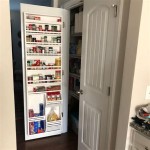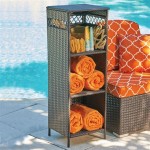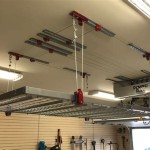The Benefits of Investing in Storage Crates: Plastics and Plastic Applications
Storage crates, especially those manufactured from plastics, are integral components in various industries and personal applications. The durability, versatility, and cost-effectiveness of plastic storage crates contribute significantly to efficient organization, safe transportation, and optimized space utilization. Investing in these plastic solutions presents numerous advantages for businesses and individuals alike, streamlining operations and protecting valuable assets.
The widespread adoption of plastic storage crates is primarily due to the inherent properties of plastics. Plastics offer a combination of strength, lightweight construction, and resistance to environmental factors that surpass traditional materials like wood or metal in many applications. The ability to mold plastics into diverse shapes and sizes allows for tailored storage solutions, catering to specific needs and optimizing available space. Furthermore, the inert nature of many plastics prevents chemical reactions with stored goods, ensuring the integrity of the contents.
Enhanced Durability and Longevity
One of the primary benefits of investing in plastic storage crates is their exceptional durability. Unlike crates made from wood or cardboard, plastic crates are resistant to moisture, insects, and rot. This resistance is particularly crucial in environments where exposure to the elements is unavoidable, such as outdoor storage facilities or during transportation in inclement weather. The robustness of plastic materials ensures that the crates can withstand repeated use and handling without significant degradation, resulting in a longer lifespan compared to alternatives.
The manufacturing processes involved in producing plastic crates contribute to their structural integrity. Injection molding techniques, for example, create seamless, one-piece constructions that eliminate weak points often found in assembled wooden crates. The absence of seams reduces the risk of breakage under stress and prevents the ingress of dust, dirt, and moisture, protecting the contents from contamination. High-density polyethylene (HDPE) and polypropylene (PP) are commonly used plastics due to their high impact resistance and ability to withstand extreme temperatures, further enhancing the durability of the crates.
The resistance to chemical corrosion is another key durability factor. Many plastics are inert and do not react with acids, alkalis, or other corrosive substances. This property is particularly important when storing chemicals, cleaning supplies, or materials that may leach corrosive compounds. The inertness of plastic crates prevents damage to the crate itself and protects the stored goods from potential contamination or degradation.
Furthermore, plastic crates are less susceptible to physical damage than their counterparts. They can withstand significant weight and impact without cracking or splintering. This resilience minimizes the risk of damage to the contents during handling and transportation, reducing losses and ensuring the safe delivery of goods. The ability to stack plastic crates securely also contributes to space optimization and reduces the likelihood of collapses or accidents in storage facilities.
Improved Hygiene and Cleanliness
Plastic storage crates offer superior hygiene compared to crates made from porous materials like wood or cardboard. The non-porous surface of plastic prevents the absorption of liquids, odors, and bacteria. This characteristic is particularly important in industries where cleanliness is paramount, such as food processing, pharmaceuticals, and healthcare. The ability to easily clean and sanitize plastic crates ensures that they remain free from contaminants and maintain a hygienic environment for stored goods.
The smooth surface of plastic crates simplifies the cleaning process. They can be quickly and effectively washed with water and detergents, removing dirt, grime, and spills. The absence of cracks and crevices eliminates hiding places for bacteria and pests, ensuring thorough sanitation. Some plastic crates are even designed with drainage holes to facilitate cleaning and prevent the accumulation of stagnant water.
The ability to sterilize plastic crates is another significant advantage in hygiene-sensitive environments. Certain plastics can withstand high temperatures and chemical disinfectants without degrading, allowing for thorough sterilization using steam cleaning or chemical washes. This sterilization process eliminates harmful microorganisms and ensures that the crates meet stringent hygiene standards. The ease of cleaning and sterilization reduces the risk of cross-contamination and helps maintain a safe and hygienic environment for stored goods.
The resistance to mold and mildew growth is another important hygiene benefit of plastic crates. Unlike wood, plastic does not provide a suitable environment for mold or mildew to thrive. This resistance is particularly valuable in humid or damp environments where mold growth is a common problem. The absence of mold and mildew prevents the spoilage of stored goods and reduces the risk of allergic reactions or respiratory problems caused by airborne spores.
The use of food-grade plastics in the manufacturing of storage crates ensures that they are safe for direct contact with food products. These plastics are free from harmful chemicals and do not leach any substances that could contaminate the food. Food-grade plastic crates are commonly used in the transportation and storage of fruits, vegetables, meat, and other perishable goods, maintaining their freshness and quality from farm to table.
Cost-Effectiveness and Sustainability
Investing in plastic storage crates offers long-term cost savings compared to alternative options. While the initial investment may be higher than that of cardboard boxes, the durability and longevity of plastic crates result in a lower total cost of ownership over their lifespan. The reduced need for replacements and repairs minimizes expenses and ensures a return on investment.
The reusability of plastic crates is a significant cost-saving factor. Unlike single-use packaging materials like cardboard, plastic crates can be used repeatedly for numerous cycles. This reusability reduces the need for constant replenishment of packaging supplies, saving money and minimizing waste. The ability to stack and nest plastic crates when empty also optimizes storage space and reduces transportation costs.
The reduced risk of damage to stored goods also contributes to cost savings. The robust construction of plastic crates protects the contents from physical damage, moisture, and contamination, minimizing losses due to spoilage or breakage. This protection is particularly important for fragile or valuable items, ensuring their safe storage and transportation.
The recyclability of plastics is an increasingly important aspect of sustainability and cost-effectiveness. Many plastic crates are made from recyclable materials, such as HDPE and PP. At the end of their lifespan, these crates can be recycled and reused to create new products, reducing the demand for virgin plastics and minimizing environmental impact. The availability of recycling programs and the increasing demand for recycled plastics further enhance the sustainability of plastic storage crates.
The reduced weight of plastic crates compared to wooden crates also contributes to cost savings in transportation. Lower weight translates to lower fuel consumption, reducing transportation costs and carbon emissions. The lightweight nature of plastic crates also makes them easier to handle, reducing the risk of injuries and improving efficiency in logistics operations.
In conclusion, the investment in plastic storage crates provides a multitude of benefits across various industries and personal applications. From enhanced durability and improved hygiene to cost-effectiveness and sustainability, the advantages of plastic storage solutions are undeniable. The intelligent utilization of these plastic resources leads to streamlined processes, secure storing solutions, and a decreased ecological footprint.

The Advantages Of Plastic Folding Crates For Fruit And Vegetable Storage Transport Ve Plastics
Why Plastic Bins Have Become The Gold Standard For Garage Storage

Designs Uses And Benefits Of Plastic Crates

The Advantages Of Plastic Folding Crates For Fruit And Vegetable Storage Transport Ve Plastics

Paper Vs Wood Plastic Crates Which Is Best Pallite Group

Designs Uses And Benefits Of Plastic Crates

Designs Uses And Benefits Of Plastic Crates

Plastic Pallets And Bins For Material Handling Piedmont Plastics

Plastic Storage Bins Are All The Rage Other Moving Tips
Why Plastic Bins Have Become The Gold Standard For Garage Storage
Related Posts








